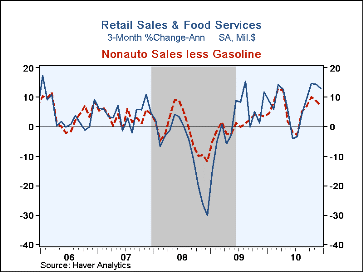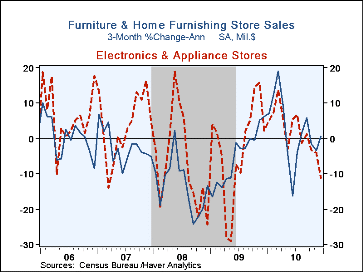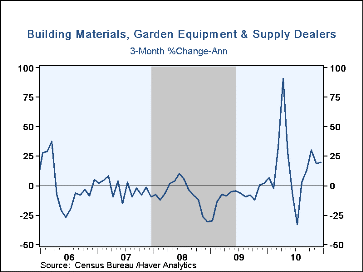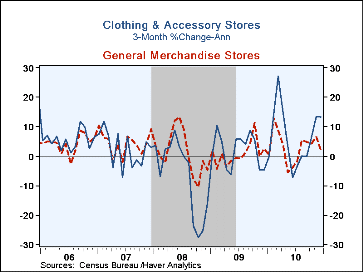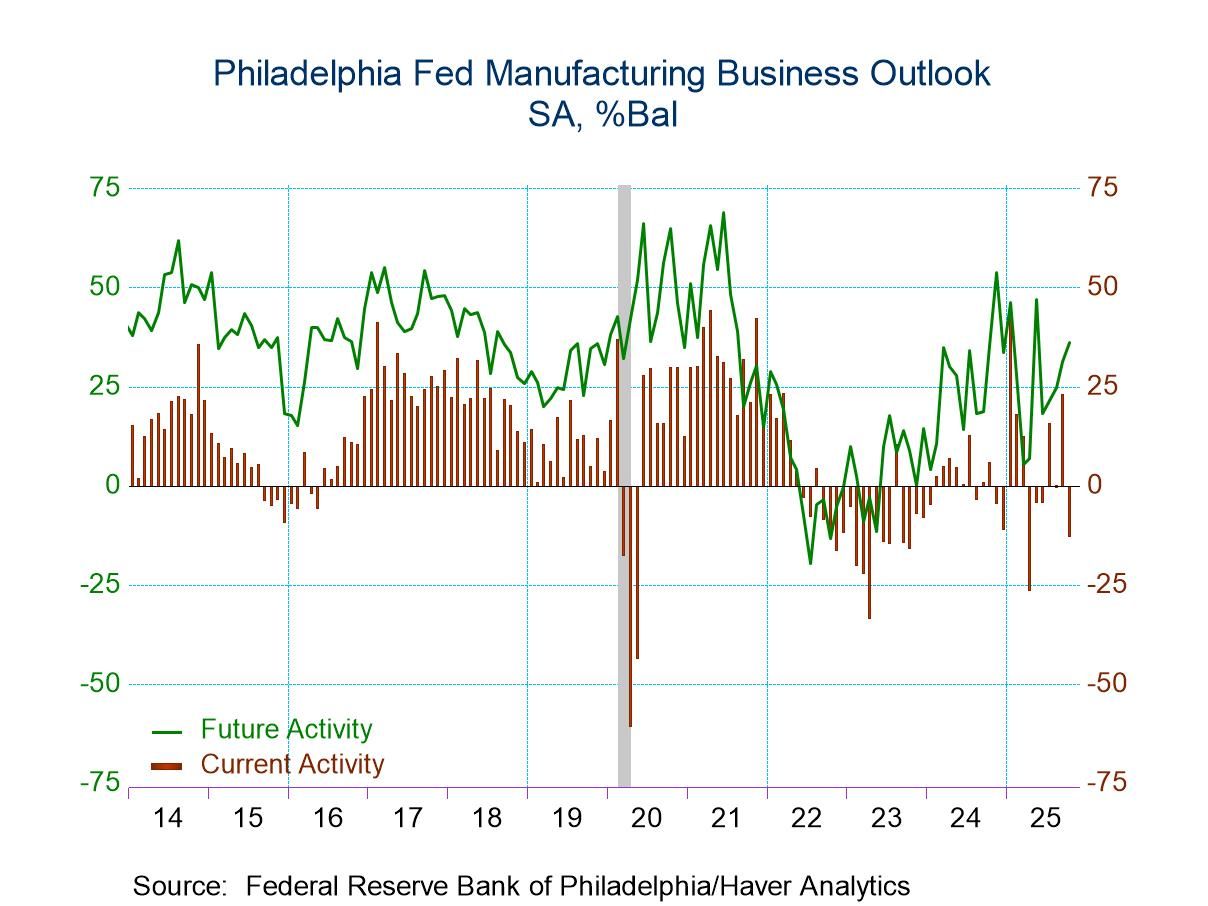 Global| Jan 14 2011
Global| Jan 14 2011U.S. Retail Sales Post Uneven Gains At Yearend
by:Tom Moeller
|in:Economy in Brief
Summary
The holiday season ended quietly. Retail and food service sales rose 0.6% last month following gains of 0.8% and 1.6% during the prior two months, revised slightly from 0.8% and 1.7%. The rise was slightly short of expectations for a [...]
The holiday season ended quietly. Retail and food service sales rose 0.6% last month following gains of 0.8% and 1.6% during the prior two months, revised slightly from 0.8% and 1.7%. The rise was slightly short of expectations for a 0.8% gain according to the Bloomberg survey. During the last three months, sales rose at a 13.0% annual rate versus a 6.6% increase during all of last year. Excluding autos, sales rose 0.5% last month, close to expectations for a 0.7% rise. The gain was, however, down from the 1.0% increase during November, earlier reported at 1.2%. During the last three months, nonauto sales rose at a 9.7% rate after the 5.8% increase last year.
Motor vehicle sales ended the year on a firm note with a 1.1% increase. That compared with a 2.3% gain in unit sales, reported earlier this month. In addition, higher gasoline prices inflated the performance of year-end sales overall. The 1.6% gain in sales of gasoline service stations pulled sales up at a 30.4% annual rate since September. Excluding sales of autos and gasoline, retail sales rose 0.4% in December and at a 7.5% annual rate during the last three months.
Uneven gains in sales were apparent amongst other categories. Building material sales were strongest posting a 2.0% increase (13.1% y/y) last month. Sales at furniture stores also firmed with a 1.0% increase (1.4% y/y) after two months of slight decline. To the downside were general merchandise store sales with a 0.7% decline (+2.8% y/y). Sales of electronics & appliances fell 0.6% (+1.8% y/y) for the fourth decline in the last five months. Apparel sales slipped 0.2% (+7.4% y/y) after two months of strong gain.
Again, much retail shopping was done on-line. Sales of non-store retailers jumped 2.6% in December (15.0% y/y) following several monthly increases over 1.0%. Currently, sales by electronic shopping & mail-order houses account for roughly ten percent of nonauto retail sales less building materials & gasoline.
The retail sales figure are available in Haver's USECON database.
Monetary Policy, Bubbles, And Goldilocks from the Federal Reserve Bank of St. Louis is available here.
| Retail Spending (%) | Dec | Nov | Oct | Dec Y/Y | 2010 | 2009 | 2008 |
|---|---|---|---|---|---|---|---|
| Total Retail Sales & Food Services | 0.6 | 0.8 | 1.6 | 7.9 | 6.6 | -6.4 | -1.0 |
| Excluding Autos | 0.5 | 1.0 | 0.8 | 6.7 | 5.8 | -5.1 | 2.3 |
| Retail Sales | 0.7 | 0.9 | 1.8 | 8.2 | 7.0 | -7.2 | -1.4 |
| Motor Vehicle & Parts | 1.1 | 0.2 | 5.4 | 14.2 | 10.3 | -12.1 | -13.9 |
| Retail excluding Autos | 0.6 | 1.0 | 0.9 | 6.9 | 6.2 | -5.9 | 2.3 |
| Gasoline | 1.6 | 3.8 | 1.4 | 10.3 | 16.3 | -24.8 | 9.9 |
| Non-Auto Less Gasoline | 0.4 | 0.6 | 0.8 | 6.3 | 4.8 | -2.4 | 1.0 |
| Food Service | 0.2 | 0.5 | 0.5 | 5.3 | 3.0 | 0.5 | 2.4 |
Tom Moeller
AuthorMore in Author Profile »Prior to joining Haver Analytics in 2000, Mr. Moeller worked as the Economist at Chancellor Capital Management from 1985 to 1999. There, he developed comprehensive economic forecasts and interpreted economic data for equity and fixed income portfolio managers. Also at Chancellor, Mr. Moeller worked as an equity analyst and was responsible for researching and rating companies in the economically sensitive automobile and housing industries for investment in Chancellor’s equity portfolio. Prior to joining Chancellor, Mr. Moeller was an Economist at Citibank from 1979 to 1984. He also analyzed pricing behavior in the metals industry for the Council on Wage and Price Stability in Washington, D.C. In 1999, Mr. Moeller received the award for most accurate forecast from the Forecasters' Club of New York. From 1990 to 1992 he was President of the New York Association for Business Economists. Mr. Moeller earned an M.B.A. in Finance from Fordham University, where he graduated in 1987. He holds a Bachelor of Arts in Economics from George Washington University.


